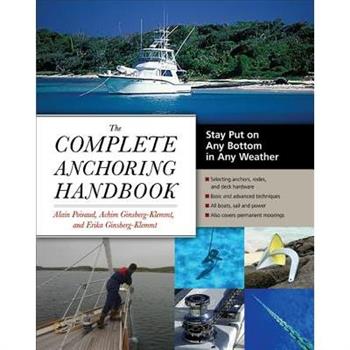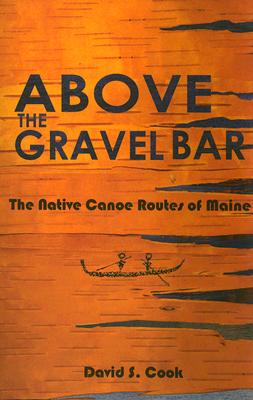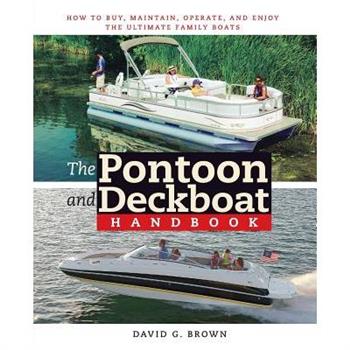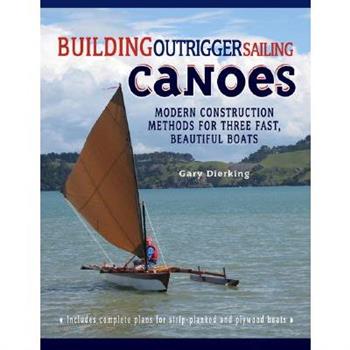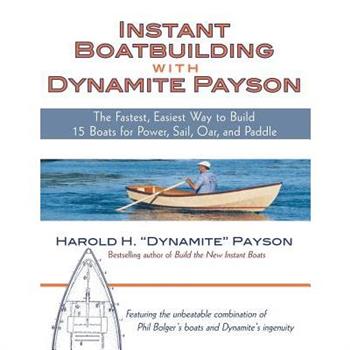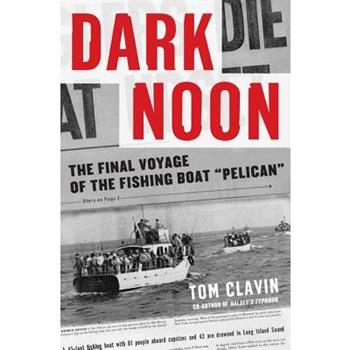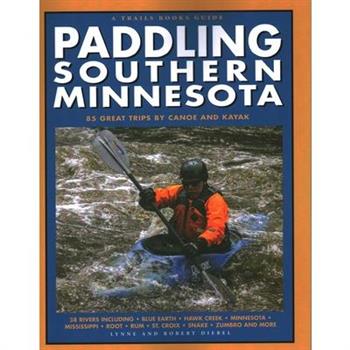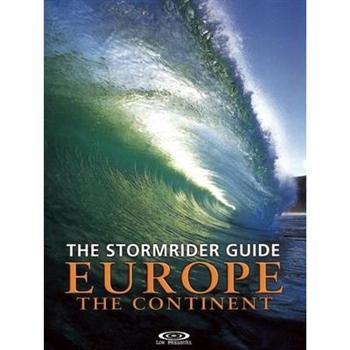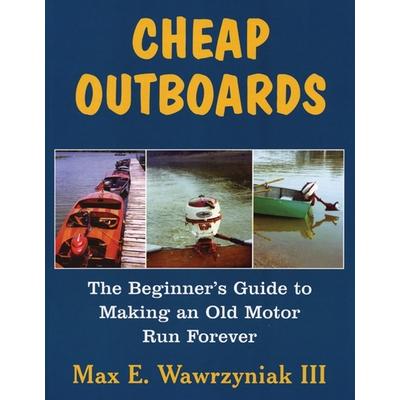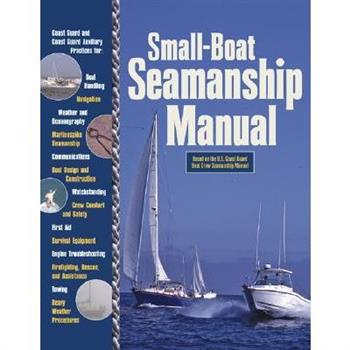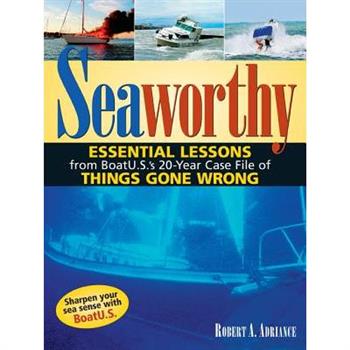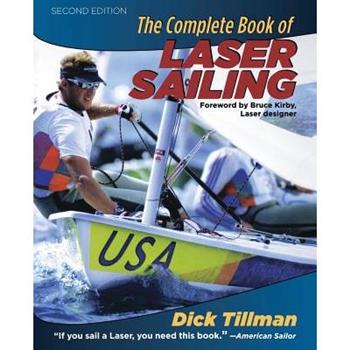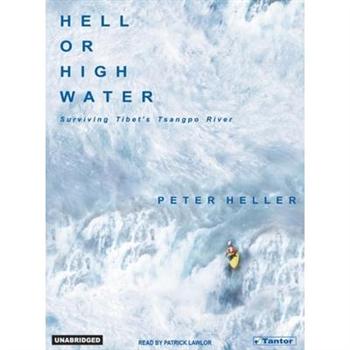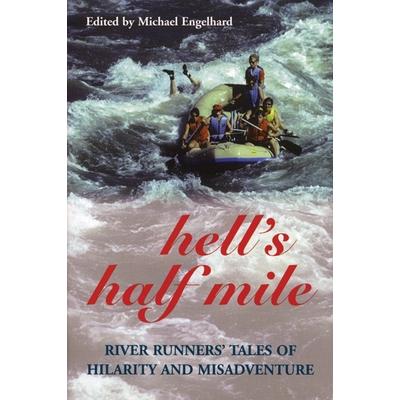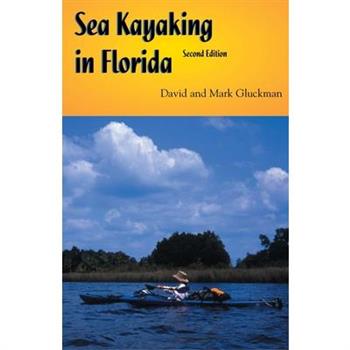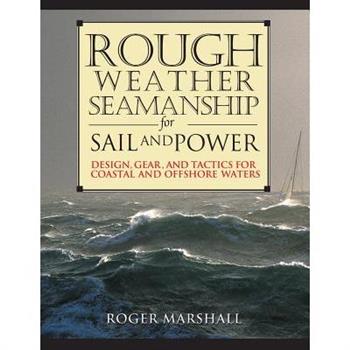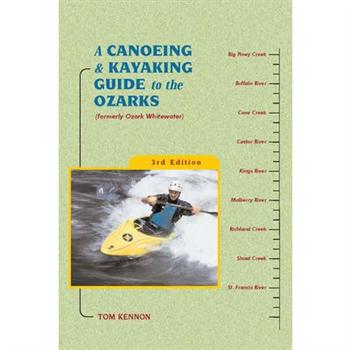The Complete Anchoring Handbook
A modern, authoritative anchoring guide for sailors and powerboatersA boat swinging safely at anchor can mark the relaxing conclusion to a great day of boating or the successful completion of an essential emergency measure, while failure to anchor properly can be frustrating, inconvenient, or downright dangerous. The Complete Anchoring Handbook is your path to mastering this indispensable seamanship skill.Based on original engineering analysis--and with contributions from such international anchoring experts as Alain Fraysse and Chuck Hawley--The Complete Anchoring Handbook emphasizes the proven best gear and methods for anchoring safely in any situation with any boat, sail or power. Here's everything you need to know, from the basics to the most advanced techniques. Poiraud and company describe: The physical forces acting on a boat, its ground tackle, and the sea bottomWhy the new generation of roll-stable anchors (including the Spade, Rocna, Manson Supreme, and others) is proving superior to traditional favoritesHow to select and size anchors and ground-tackle componentsHow to connect those components without introducing weak points in your ground-tackle system
Pete Culler on Wooden Boats
The insights and wisdom of the late, greatboat designer and builderRenowned as one of the last and best of the old-timeboatbuilders, Captain R. D."Pete" Cullerprovided a guiding light for the wooden boat revival inthe 1970s. His designs are classic melds of eleganceand utility; his workmanship was akin to artistry; andhis teaching and writing a blend of clarity, good sense, insight, and humor. This book brings together the completetexts of Culler's classic works Boats, Oars, andRowing and Skiffs & Schooners, along with articles fromThe Mariner's Catalogs and a selection of his timelessboat designs.
Above the Gravel Bar
Above the Gravel Bar opens up a new way of seeing Maine and the Northeast as a vast network of waterways. With this book you can put your kayak/canoe in a nearby river or pond in Maine and travel prehistoric routes to campgrounds thousands of years old. David Cook takes the reader on a birchbark canoe journey through the landscape in the context of Northeastern geological development and Indian prehistoric culture. On rivers, lakes, over carries, and through coastal routes, we follow the archaeological and historical record, informed by accounts of early explorers. First attempted in the early twentieth century, the publication of these ancient canoe routes, in daily use for millennia, is finally accomplished and in its third edition, with translations of Indian place names, a thorough index, notes and bibliography, and a foreword by Penobscot tribal historian, James Eric Francis, Sr. The anthropologist David Sanger, PhD, provides an introduction. Thirty-two illustrations including twelve maps. This book has been chosen to be included in the new curriculum introduced with the Maine state law requiring K-12 schools to teach Maine Native American culture. "Puts the true ancestral landscape into perspective." --James Eric Francis, Sr., Penobscot tribal historian Above the Gravel Bar is a masterful account of canoeing Maine's interconnected waterways. --David Sanger, PhD, Professor Emeritus, Anthropology and Quaternary Studies, University of Maine, Orono
The Pontoon and Deckboat Handbook
Everything you need to know about pontoons and deckboats Wide, stable, and perfectly adapted for family fun andentertaining, pontoons and deckboats are among the mostpopular lake and river vessels in America. The Pontoon and Deckboat Handbook explains to you how these boats differ from conventional types in handling, safety, maintenance, and other aspects of ownership and use.
Building Outrigger Sailing Canoes
Build the fastest, most exoticsailboats around!Popular in Hawaii and throughout the South Pacificand Indian Oceans, outrigger canoes combine theromance of the South Seas with a ruthless efficiency ofdesign and breathtaking sailing performance. This is thefirst book to present complete plans and buildinginstructions for three outrigger sailing canoes.Based on traditional Hawaiian and Micronesian types, thedesigns are lightweight, easy to build, and screaminglyfast. Author Gary Dierking shows you how tobuild these boats using stitch-and-glue and strip-plankingconstruction, explains what tools and materials arerequired, how to rig and equip the boats, and more.
How Boat Things Work
"Anyone who contemplates any onboard do-it-yourself work should have this book at his or her elbow."--Cruising World"This book reduces a boat to its most rudimentary parts in simple drawings and clear explanations. Fascinating to read, it's a perfect teaching tool."--Ocean NavigatorWhether you're a new mariner or a lifetime veteran, How Boat Things Work is a resource you can't afford to be without. With intricate two-color cutaway drawings of eighty different systems and devices, as well as detailed explanations of how they're assembled, how they work, and how they can go wrong, this book covers every primary component of your boat's inner workings. This guided tour "under the hood" of your sailboat or powerboat includes: Engines, transmissions, bearings, stuffing boxes, propellersSteering systems, autopilots, windvanes, compassesRigging, splicing, line handling, block and tackle, sail controlsAnchors and windlassesDC and AC electrical systemsPumps, toilets, seacocks, freshwater systems
Instant Boatbuilding With Dynamite Payson
From the acknowledged master of the "instant boat"--tips, techniques, and designs for quick-and-easy plywood boatbuildingDynamite Payson offers you a new guide to building 15 exciting boats from master designer Phil Bolger. Instant Boatbuilding with Dynamite Payson includes plans and instructions for a multipurpose skiff for sail, oar, and power; a pirogue for single or double paddle; a big pram dinghy; a maneuverable peapod; a long, fast, rowing dory; a rugged outboard-powered work skiff; and more. You will enjoy the commonsense advice, step-by-step building instructions, and tips on tools and materials that have made Payson a hero of amateur boatbuilders worldwide.
Dark Noon
Dark Noon is the mesmerizing re-creation of a fateful day at sea. It is also a story of the postwar American dream as experienced in the fishing village of Montauk, Long Island, where fish were money and where optimism and success went hand in hand. And it's a story of the end of an era, when one terrible disaster changed the fishing culture of a prosperous port forever."Meticulously researched. A fascinating story."--Distinction"A first-rate reportorial job that builds to a taut and suspenseful climax of incredible detail. The harrowing description of men gaff-hooked out of the churning swells is unforgettable."--The Independent
Handbook of Marine Surveying
This expanded and updated edition of Thomas Ask's Handbook of Marine Surveying will be welcomed by students of marine surveying, professional marine surveyors, boatyard operators and technically-minded boat owners. It covers the latest surveying technology, including an analysis of the mechanical behavior of materials, stress concentration, failure analysis, fatigue an fracture, corrosion, wood-damaging organisms, the composition and characteristics of common plastics, metals and composite materials. New sections include: hull and deck loads, non-destructive testing, combustion and pollution, hydraulic and pneumatic systems, engine installations, fuel systems, electrical systems, piping and lubrication systems, HVAC/R systems, firefighting systems, noise and vibration, and propellers. There is also a useful survey checklist that provides practical techniques and hints for conducting a survey.
Paddling Southern Minnesota
If you think Minnesota paddling begins and ends in the Boundary Waters, a pleasant surprise awaits you! Here is your guide to 85 adventures on the rivers and streams of the Gopher State's southern half. The Diebels guide you through peaceful, meandering streams, the most challenging whitewater adventures--and everything in between. Young, old, beginner and expert will find Paddling Southern Minnesota a trusted companion on the the water.
The Stormrider Guide Europe
This is a surfing guidebook to Europe (not the Atlantic Islands). "The Stormrider Guide Europe - The Continent" includes - Denmark, Germany, The Netherlands, Belgium, France, Spain, Portugal, Italy and Morocco. It is fully revised and contains detailed information covering The Surf, Ocean Environment and Surf Culture on a country by country basis. The Surf outlines where and when to go and demystifies the continental Europe coastline from Denmark to Morocco. Ocean Environment deals with pollution, erosion, access and hazards, while Surf Culture illuminates the surf scene including history, surf media, contests and localism. The indispensable travelling information is concise plus there's links to all the latest oceanographic and swell forecasting resources. The Continental coastline is accurately mapped in detail, showing where to find the main surfing breaks. Each surf break report outlines how and where the waves break, quality, consistency and the general vibe. The unique Stormrider symbols reveal optimum wind, tide, swell size and direction, as well as wave type and bottom contour. Crowds, hazards, dangerous sea-life, pollution, access and environmental problems are also noted. A picture tells a thousand words so there are hundreds of the best photos of European surf, ever compiled. Stunning images in crisp colour from the cream of the world's surf photographers add that extra dimension that makes Stormriders the most detailed surf guides money can buy.
Cheap Outboards
Max Wawrzyniak is an outboard motor guru. He advocates finding an old motor at a yard sale for $50 and fixing it up, rather than spending $1500 on a new motor. Sometimes the "secret" to getting a perfectly running motor from a lifeless hulk is as simple as a new sparkplug and a squirt of WD-40 into the cylinder. What he teaches is not only a money-saving skill, but can also be life-saving, as the boater will no longer be helpless in the face of engine failure at sea. Max's clear instructions and detailed photographs will make anyone into a mechanic.
Coastal Cruising Under Power
Coastal Cruising Under Power is your ultimate companion for exploring the coastal waters of North America with confidence in your powerboat. This beautifully illustrated guide provides countless tips on anchoring, piloting, weather, and more, along with in-depth, step-by-step instructions on numerous specific skills and techniques.
Small-Boat Seamanship Manual
Make the U.S. Coast Guard your first mateThe Small-Boat Seamanship Manual contains all the information found in the Coast Guard's official 1,200-page training manual, giving you access to the highest standards of seamanship practiced and perfected by professional mariners. In addition to in-depth coverage of boat handling and navigation, you'll find instructions for dealing with extreme situations, including search and rescue, towing, firefighting, vessel flood management, righting capsized boats, and maneuvering in heavy surf. You'll also learn aboutSteering with a broken hydraulic line Close-quarters maneuvering Using the right lines and knots Capsize prevention, precautions, and survival techniques Change-of-course maneuvers to reduce icing and freezing spray Plugging and patching holes for flood control Predicting weather And much moreThis is the U.S. Coast Guard's primary training resource for boat handling and seamanship in conditions ranging from benign to extreme. Now this accumulated wisdom is yours with the Small-Boat Seamanship Manual.
Boatowner’s Illustrated Electrical Handbook
Keep your boat's electrical systems running and reliable "Boatowner's Illustrated Electrical Handbook is perfect for learning how your boat's electrical system and much of its equipment works, and it will be an invaluable guide when adding equipment as well. This book needs to be in every boater's library as a ready reference on how to make effective repairs and modifications that comply with ABYC standards."--Ed Sherman, Senior Instructor and Curriculum Designer, American Boat and Yacht Council "A definitive technical book that is easy to read. Buy this book and throw out the rest."--Motorboat & Yachting Whether you take to the sea under power or sail, bounce around the bay in your runabout, or cross oceans in your cruiser, you'll find everything you need to maintain, repair, and upgrade your boat's DC and AC electrical systems with this comprehensive and fully illustrated guide. Tackle onboard electrical projects and learn how to: Meet ABYC standards for both DC and AC wiring Install solar- and wind-power systems Add electrical components Prevent corrosion of your electrical system . . . and more
The Complete Guide to Metal Boats
Build the Strongest Boat PossibleMetal boats can deal with hazards like ice and coral that would rip apart a fiberglass or wooden hull; many long-distance cruisers choose a metal boat for just that reason. But they are not mass-produced; the only way to get one is to build it yourself or have it custom-built. Bruce Roberts-Goodson has been designing and building metal boats for more than three decades, and in The Complete Guide to Metal Boats he tells you all you need to know to start building the boat of your dreams.How to build or refurbish hulls, decks, and superstructuresHow to prevent corrosionBuilding from plans or precut kitsSample designs for sail- and powerboatsThis updated and expanded new edition also gives you a bonus CD with many study plans and 1,500 kit-assembly photos--the equivalent of a shop manual for metal boat building."This book is for anyone contemplating building or owning a metal boat. For solid, common-sense advice based on broad experience, the guide lives up to its name."--Chesapeake Bay Magazine
Seaworthy
You're safest on the water when you and your boat are seaworthyBoatU.S. provides marine insurance coverage to 250,000 American powerboaters and sailors, which makes its collection of claims reports one of the world's largest archives of boating accidents. For more than 20 years, as writer and editor of BoatU.S.'s quarterly publication Seaworthy, Bob Adriance has sifted and analyzed this rich trove to discover and highlight the profound lessons it contains.Here is the ultimate boater's guide to preventing, responding to, and surviving accidents under power or sail, including hurricane damage, lightning strikes, collisions, fires, groundings, sinkings, crew overboard, dismastings, and more.Experience may be the best teacher, but the lessons are a lot less painful when the experience is someone else's. Here is a unique opportunity to use other skippers' misfortunes to make your own boat and seamanship safer. "A boaters' guide as important and practical as any I've read. And if you can ignore the occasional frisson of guilty pleasure, one that's as engrossing to read as The Perfect Storm."-Tony Gibbs, yachting writer, editor, and novelist"Hair-raising disasters, hard facts, and helpful advice; Seaworthy is a compendium of no-nonsense information on avoiding problems that only a marine insurer could provide. Invaluable for the boater, builder, designer, and surveyor."-Dave Gerr, director, Westlawn Institute of Tecnology; author of The Nature of Boats and The Elements of Boat Strength
The Complete Book Of Laser Sailing
The definitive guide to the Laser.The Complete Book of Laser Sailing is the most comprehensive book about successfully sailing and racing this popular and challenging high-performance dinghy. Dick Tillman tells you everything you need to know about the boat and how to set it up and sail it, including: Rigging and sailing the boatTrailering and cartoppingMaintenance and storageTraining and physical conditioningUpwind and offwind racing techniquesClothing and equipmentInterviews with such champion racers as Hans Fogh, Ed Baird, Ed Adams, and Danielle MyrdalPlus this updated and expanded edition gives you: The latest sail control and rig modificationsUpdated listings of major competition resultsNew interviews with champion racers, including Olympian Mark Mendelblatt and Paige Railey on Radials"A fine-tuned guide to everything anyone could ever need or want to know about the Laser."--Sailing"This book will most certainly make you a better sailor and could help you become a champion."--Soundings"This book is a must."--The Little Ship
Paddling Northern Minnesota
Discover an amazing variety of paddling adventures with this guide to 86 trips on northern Minnesota's rivers, including the Boundary Waters.
Physical Justice
Some of the most powerful and important techniques for healing the body, mind, and spirit are detailed in this book. For people who are trying to heal a debilitating chronic illness, the use and eventual practice of one or more of these healing techniques can be a very important part of a healing program. Diet, stress reduction and avoidance of toxic substances can provide enormous healing benefits. Take the time to thoroughly explore all of the information in this book and then put the information into your own healthy practice. Always remember medicine is a practice. The practice of medicine is a common term and is the absolute truth - it is a practice. I wish medicine were a pure science where 2 + 2 always equaled four. Unfortunately, it is not that way. I have studied alternative medicine for over 40 years and this book is an attempt not to let those 40 years of research and study go to waste. What you are about to read in this book might seem unbelievable, some of it is just plain old wisdom from Grandma's first aid notes (Grandma always knew best). My hopes are that you find something that will be of some help to you. I hope that this information will change your life as much as it has changed mine. This book is not intended to put down allopathic medicine. Neither is it intended to replace. There is a great need for traditional medicine, but I believe there is an even greater need for alternative medicine. You should have a choice and the knowledge to make that choice. I do not presume to make diagnoses; I only try to change the chemistry of your body in a natural way so it can respond favorably against the disease you may be confronting. Please know this, it is always, always, easier to prevent the disease rather than try to cure it. This book contains more ideas on preventative medicine than cures for disease. If only your sixteen-year-old could have the knowledge presented here, life may be much easier for him. Too often, I am presented with a problem that has been neglected and has lasted so long that the cure looks almost impossible. Please know that almost nothing is impossible and it is never too late until you are six feet under. Never forget the power of prayer, as I have learned through the years, faith and a higher power sometimes has a greater healing effect than any medical efforts traditional or alternative.
Inspecting The Aging Sailboat
". . . the perfect place to begin, or continue, your education."--SailingWhether you are shopping for a used fiberglass boat or prioritizing maintenance tasks on the one you already own, this book saves money--and perhaps even disaster. With clear step-by-step drawings and instructions, Don Casey explains how to recognize problems--both surface and hidden--and how to separate cosmetic flaws from serious faults.
Hell’s Half Mile
A collection of 27 tales from river runners and outdoors writers about rafting trips gone wrong. These stories range from the hilarious to the horrifying: men overboard, capsized boats, bear attacks, whirlpools and waves that whiten the hair, and tourist encounters that are even worse. Includes excellent writing from Pete Fromm, John Nichols, Edward Abbey, R.M. Patterson, Craig Childs, Brad Dimock and other well-known outdoors writers. The collection is one-third previously published pieces and two-thirds new material.Michael Engelhard is an anthropologist and an outdoors instructor. He writes natural history and travel pieces for Northern Lights, Plateau Journal, Wild Earth and other publi-cations. He lives in Moab, Utah.
Sea Kayaking In Florida
This revised guide to a fast-growing water sport is for both novices and experienced kayakers. Whether you want to fish or just watch wildlife, sea kayaking offers new ways to enjoy Florida's hidden bays and open oceans. You'll find the latest information for a kayaking adventure: boats, camping, clothing, and gear, as well as an expanded list of boat liveries and outfitters. Learn about the birds, wildlife, and coastal vegetation you can expect to see as you paddle Florida's coasts. In this new edition you'll find new maps and campsite guides to the Big Bend Sea Grasses Saltwater Paddling Trail, as well as an expanded trail itinerary allowing you to see even more of Florida's "nature coast." There are also additional tips, maps, and campsite locations for paddling the open water of the Everglades. Though the Everglades and the Big Bend are the two most important paddling areas of the state, the rest of the coastline is also described, highlighting Florida's history and geography.
A Cruising Guide to New Jersey Waters
With this book in hand, boaters can cruise down the Jersey Shore--from New York Harbor to Delaware Bay--in the good company of Captain Donald Launer. Captain Launer brings many years of experience as a skipper of small boats to this engaging nautical and historical guide to New Jersey's tidal waters. Cruise with him from the New Jersey/New York state line near the mouth of the Hudson River, past Raritan Bay and Sandy Hook, and into the Manasquan Inlet. From there, he gives you a choice of voyages: the inside route through the Intracoastal Waterway to Toms River, Barnegat Bay, Atlantic City, and Cape May, or taking the offshore passage. Then you explore the Delaware Bay and its tributaries and cruise up the Delaware River to Trenton. This revised edition contains updated information about onshore facilities, marinas, restaurants, stores, sites of interest, docking fees, bridge heights, maritime service stations, weather, navigation, and safety, as well as post-September 11 regulations in the waters around New York City. The book also includes a wealth of photographs and sea charts. Donald Launer, who holds a U.S. Coast Guard captain's license, has explored the New Jersey waters in every kind of small craft since he first sailed in Barnegat Bay at the age of eight. His articles on recreational boating have appeared in Good Old Boat Magazine, Cruising World, The Beachcomber, Offshore, and Sail. He berths his schooner, Delphinus, in Forked River, New Jersey.
Rough Weather Seamanship for Sail and Power: Design, Gear, and Tactics for Coast
Written by an accomplished naval architect, this book shows the average boater how to safely weather the fiercest storm. Rough Weather Seamanship for Sail and Power arms readers with the knowledge they need to select and modify a boat for heavy weather; understand, track, and evade storm systems; and prepare for a storm in harbor, coastal waters, and offshore. It offers ocean-tested heavy-weather techniques for both sailboats and powerboats, practical advice on surviving worst-case scenarios, and decision-making exercises that can save lives.
Practical Seamanship
Anyone who has spent time at an anchorage, a marina, beside a channel or at a harbor entrance quickly realizes a great many people operating power boats are relatively new to the sport and are still coping with the learning process.The need to know why boats handle as they do and how those conditions can be overcome or used to an advantage is the reason for this book. Starting with the basics - every action has an equal and opposite reaction - and working up through thrust, windage, currents, center of gravity, hull shape and beyond, Practical Seamanship provides the knowledge in simple terms and clear illustrations.David's goal is not to make every reader a blue-water cruiser, but to provide the basics to help them handle their boats in a knowledgeable, responsible manner, backed up by a recognition of what the boating community expects from them (and why) while they are on the water. The text touches upon lines, rigging, equipment, boat design, rules and courtesy, but only where they impact the main theme, becoming a good and safe boater.Trailer BoatsGOTTA HAVE ITBrush Up On Boat HandlingHow many boaters suffer embarrassment, or worse, due to lack of boat-handling experience? Anyone hanging around a marina or public dock for very long knows this is an all too common problem.Now from Bristol Fashion Publications comes Practical Seamanship: How to Handle Your Boat Like a Pro, the latest book by Trailer Boats columnist David S. Yetman. This time the prolific author is out to help novice boaters gain mastery over powerboating -- and become better and safer boaters overall. According to Yetman, many boat-handling problems stem from inexperience and lack of familiarity with the mechanics ofit.Chock-full of basic information, the illustrated, 116-page book addresses issues pertinent to inboards with single or twin screws, outboards and sterndrives. Other chapters outline heavy-seas handling, docking and anchoring. This sturdy, laminated book is constructed to accompany you onboard.
A Canoeing and Kayaking Guide to the Ozarks
In the heartland of America rise the Ozark Mountains, teeming with cascading, free-flowing streams. Situated astride the Missouri/Arkansas border, the Ozarks represent a canoeing and kayaking wonderland. Still a comprehensive, accurate and readable guide, but now with a new design and format, A Canoeing & Kayaking Guide to the Ozarks (formerly Ozark Whitewater) catalogs the varied rivers of the region. Inside are updated descriptions of all the classic rivers, including the Buffalo National and Little Missouri, as well as exciting new reports of today's steep creek runs: Bryant, Turkey, and many others. This guide is the definitive sourcebook for Ozark river sport.






